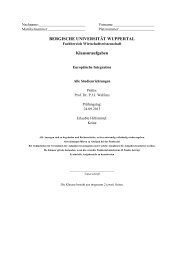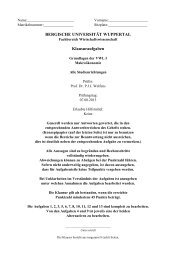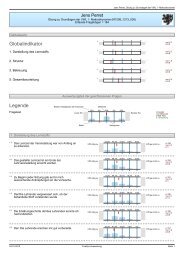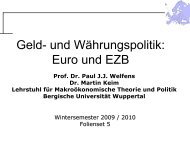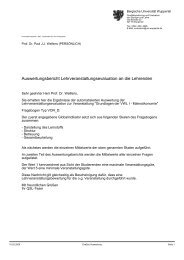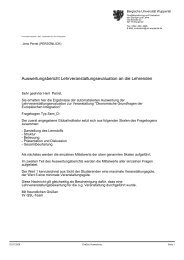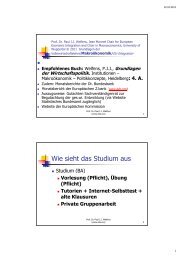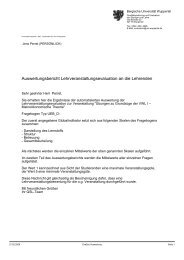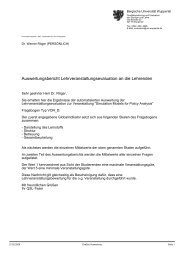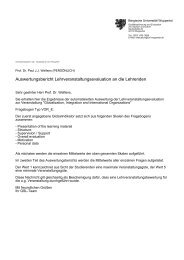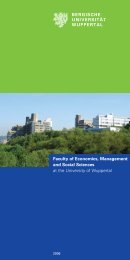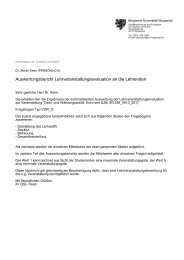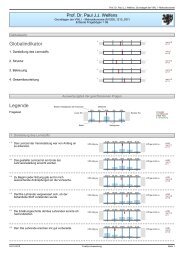UNIVERSITÄT POTSDAM - Prof. Dr. Paul JJ Welfens
UNIVERSITÄT POTSDAM - Prof. Dr. Paul JJ Welfens
UNIVERSITÄT POTSDAM - Prof. Dr. Paul JJ Welfens
Create successful ePaper yourself
Turn your PDF publications into a flip-book with our unique Google optimized e-Paper software.
4. The Role of Telecommunications and the Internet for Trade and Growth<br />
Jungmittag and <strong>Welfens</strong> presented three studies to assess the impact of telecommunications<br />
and the Internet on economic growth (JUNGMITTAG / WELFENS, 1998;<br />
WELFENS / JUNG-MITTAG, 2000; WELFENS / JUNGMITTAG, 2001b). In the<br />
following section we will summarize some of the major findings and highlight additional<br />
issues.<br />
4.1 Telecommunications, Innovation and Economic Growth in Germany 1960-<br />
1990<br />
In the first study alternative sources of technical progress were identified and approximated<br />
by means of indicator variables, which were then considered when estimating<br />
long-term production functions for the business sector of the Federal Republic of Germany,<br />
without agriculture, forestry, and fishing and without housing sector from 1960<br />
until 1990 (JUNGMITTAG / WELFENS, 1998). They distinguished between technical<br />
progress which is the result of one's own research and development activities, and the<br />
import of technological know-how through licensing agreements. The first source of<br />
technical progress was approximated through the time lagged stock of patents at the<br />
German Patent Office (Deutsches Patentamt); the second was approximated by the real<br />
fees for licenses captured in the balance of payments of the Federal Republic of Germany.<br />
In addition, the use of telecommunications was integrated in the long-term production<br />
function in that it is approximated by the indicator variables – the number of<br />
annual telephone calls.<br />
With the technological innovations and the role of information and communication<br />
explicitly taken into consideration, the extended Cobb-Douglas production function<br />
now is in logarithmic form:<br />
(1) y = a + α ⋅ k + β ⋅l<br />
+ γ ⋅ pat − + δ ⋅lex<br />
+ ε ⋅tc<br />
+ u ,<br />
36<br />
t<br />
t<br />
t<br />
t 2 t t t<br />
where y represents the output, k the capital employed and l the amount of labor (lower<br />
cases denote logarithms). The parameters α and β represent the partial production<br />
elasticities of the factors capital and labor. Furthermore, pat represents the stock of patents,<br />
lex the actual expenditure on licenses and tc the number of telephone calls.<br />
For estimating the long-term production functions, the concept of the cointegration<br />
of time series introduced by Engle and Granger (cf. ENGLE / GRANGER, 1987)<br />
was used. This concept allows the differentiation between actual long-term relations<br />
and merely spurious regressions if time series are trending. Since in this study only the<br />
long-term relations and not the short-term dynamics between the output, the usual pro-



